I’m pleased to publish this email interview with the painter Donald Beal who talks about his background and approach to painting outdoor and studio based landscapes and other thoughts about his painting. I would like to thank him for his generous sharing of time and energy with this interview.
Donald Beal studied painting at the Swain School of Design in New Bedford, MA, and received an MFA from Parsons School of Design. In 1985 Beal moved to Provincetown, MA where he currently lives with his wife, Khristine Hopkins. Beal has taught Fine Arts at the University of Massachusetts, North Dartmouth since 1999. He is a 2013 recipient of The Lillian Orlowsky and William Freed Foundation Grant. He is represented by the Berta Walker Gallery in Provincetown and the Thomas Dean Fine Art, Atlanta GA He has had selected solo exhibitions at the A Gallery in Provincetown, MA, Moira Walsh Gallery, Kittery Maine, Museum School Provincetown Art Association and Museum,Center For Arts In Natick, Natick, MA, the Berta Walker Gallery, Provincetown, MA and the Prince Street Gallery, New York, NY.
He will be a part of the On the Shoulder of Giants exhibition curated by Thaddeus Radell at the Westbeth Gallery in New York, March 4 – 25. He will also be giving two workshops at the Provincetown Art Association And Museum, Still Life Drawing, July 17 – July 21, 2017 and Painting from the Figure, July 17 – July 21 2017
Larry Groff: In a previous interview you talked about how Paul Resika was less apt to teach painting technical concerns but instead talked to you more about what life as an artist could mean. In what ways did his advice help or hinder your journeys as a painter? What other aspects of Resika’s teachings still resonate with you today?
Donald Beal: I studied with Paul as a grad student, and because I had come out of an excellent program at the Swain School of Design where I received a great education in the nuts and bolts of drawing and painting, I didn’t really miss it as a student of Paul and Leland’s. As I remember, Paul’s message was more about using whatever skills, talents we had to find and bring forth something extraordinary from whatever it was we were working from (usually the model or still life arrangement). He was a big and charismatic personality in the classroom.
Paul became more important to me after I left school. I worked in a frame shop on West Broadway that framed his work. Occasionally we would go to his studio to deliver framed pictures or pick up paintings to be framed. Those visits could stretch out for hours, often involving something to eat, some Irish whiskey, and lots of talk about painting. We’d look at his work, the work of friends, he’d talk about artists he’d known (many forgotten), shows that were up in the city, paintings he thought were great along with the ones that were maybe not so great.
Later, when I had moved to Provincetown, he bought a home in neighboring Truro on a hill that overlooks Provincetown harbor and Cape Cod Bay. He hired Mike Secareccia (a good painter and friend) and me to convert a garage into a painting studio. The conversations picked up where we had left off and continue to this day. Even though he and I are very different people leading very different lives, as a young painter his example gave me a template for what it means to immerse yourself in your work and make a life as an artist.
LG: I understand Leon Kossoff’s paintings have been a major influence to you. Can you explain more about why that is?
DB: I wouldn’t say Kossoff has been a major influence for me, other than that I generally admire his work and was struck by an exhibition of his in NYC years ago that featured his paintings of the “Christ Church”. They were strange and ghostly things. He’s one of my favorite “big name” painters working today.
LG: What are some other important influences for you and why?
DB: As a student and for years afterwards I thought a lot about Ingres and Cezanne. Lennart Anderson was the living artist I spent a lot of time looking at and hoping to emulate. I eventually went to study with him as a grad student. I left after a semester, the program wasn’t a good fit for me, but I’ve always admired his work. Later on it was Courbet and de Kooning. The list could go on, but these were the artists I spent the most time looking at and thinking about. I should also include the equally important influence my teachers and my artist friends have had on me, especially the latter.
LG: Provincetown has had a rich history of great painters. Charles Hawthorne, Henry Hensche and Edwin Dickinson lived and taught there and Hans Hofmann had his School of Fine Art established there in the 30’s they all continue to have great influence with many outdoor painters. Many other famous painters both abstract and representational have also painted there. Can you say something about how these Provincetown artist’s traditions have influenced your work?
DB: Hans Hofmann taught three of my teachers, and, I think, shaped much of what I got from them. His ideas on plasticity, and abstraction are the language I use every day I’m in the studio, and the one I teach in the classroom.
Dickinson is also an influence. During my first year at Swain one of my teachers showed me a repro of Edwin Dickinson’s drawing “Dos’ Window” (which happens to be in the Provincetown Art Association and Museum’s collection) that changed the way I thought about what a drawing could be. It should be a drawing about nothing… just a window sash and a fuzzy view outside of a bit of the roof on the house next door. With some guidance from my teacher, I was able to see that this drawing exposed the poetry that can be found in something so common and overlooked. Pictures didn’t necessarily have to have some big narrative in order to gain meaning; rather, ordinary things deeply seen can have a nameless beauty and mystery.
I saw a lot more of his work when I moved to Provincetown. Ten or so years ago, I helped install a big show of his work at PAAM (Provincetown Art Association and Museum) and got to spend several days looking closely at his paintings and drawings as we tried to sort out the hanging. It was all so weird and beautiful, and I particularly loved the drawings. His genius at balancing what is left half said against what is made crisp, and what is left out altogether is something I’ve learned from. His beautiful tonal qualities, phrasings, and odd compositions are unlike anyone else I can think of.
If Provincetown did not have the artistic legacy that it has, I’m not sure that I would have moved here. You’re at land’s end, surrounded by ocean, and as beautiful as that is, without the artists that preceded me and the ones that work here now, I think I would have felt too isolated. Having Hawthorne’s, Knath’s, Hofmann’s, Motherwell’s, Lazell’s work (the list goes on and on) in people’s homes, in town buildings, and in PAAM makes this a great and fertile place to be an artist.
LG: Would you say Provincetown landscape painters might tend to fall into two (or more) opposing camps here – like the Hawthorneists vs. the Hofmannistas?
DB: I think that sort of separation is long in the past. Every kind of work is being made here now and I think it’s all met with acceptance and respect.
LG: What are your most important considerations in deciding what to paint?
DB: When I paint from observation it’s usually the landscape, less often I’ll paint from the flowers that we keep in our home. I’ve painted the woods in Provincetown (Beech Forest) over and over again for around twenty years. I go there because it’s unknowable; another way to put it is that its hard to find a pat response to the chaos of the trees, branches, shafts of light, and pitching hills and valleys. I have to be completely alive to where I am and what it’s like to be there, in order to get anywhere at all with this landscape.
I also paint the places (harbor, ocean, inlets) that everyone else does here on the Cape, which brings its own challenges. For one thing it’s such well-worn territory and easily falls into cliché. Also it is spare… big sky, big bay, skinny strip of land, and colorful dots for boats with little triangles for sails. The challenge here is to see past the clichés and find your own way. It’s probably what drove me into the woods, but still I go out and try my best, it’s just too beautiful not to.
A simple answer would be that I look for something in nature that is exciting to be in front of and to see if I can find my way closer to what makes it so.
LG: Do you make separate drawings or studies before starting a painting?
DB: Almost never, when I do it’s by accident.
LG: What role would you say that drawing has for your outdoor, observational painting? Are you concerned with visual mapping out the terrain or more concerned with the energy, gestural and dynamic qualities?
DB: Definitely more concerned with energy and gesture, I don’t have the temperament to map out the landscape. Even so, drawing is fundamental to everything I do, and an order is eventually established as I chase down the rhythms I see in front of me.
LG: What determines the dimensions of your painting?
DB: Mostly pragmatic concerns determine the dimensions of my work. Large formats are difficult to cart into and out of the landscape. Also, my landscape work tends to be one-shot paintings and I can only cover just so much territory in that amount of time. I have made large studio paintings, but I’ve learned the hard way about the practicalities of delivering them to shows and storing them in my small studio once they come home. I try to keep them to a size I can fit in the back of my truck.
LG: In what ways does your studio painting differ from your outdoor painting in terms of how you apply the paint to the canvas?
DB: The one real difference between the two is that the work done in the landscape is typically one shot, whereas the studio work can go on for weeks, months, and years. With the longer paintings I can take advantage of the transparencies you get when you paint over, or wipe into, or scrape away at color applied over previous layers of paint.
LG: Memory and invention seem to play a large role in many of your outdoor paintings, How much does direct observation of the motif join this process or does it vary in each painting?
DB: The paintings done from life have given me the chops I need to meaningfully push color and tone around until it eventually begins to congeal into a person, place, or thing. Increasingly these forms feel partially shaped by some version of memory. This has been a productive way for me to work, since I don’t seem to be able to consciously go right to a painting that’s about this or that. These paintings are founded through an abstract language first and foremost and content arrives organically as a result. For me it’s like putting the horse in front of the cart.
LG: I read in an 2015 Provincetown Arts article by Anna Dempsey about you that “As you lose yourself in nature,” Beal explains, “it can shift from a pastoral and benign place to a violent and discordant one.” Indeed, he adds, if we listen long enough, “the birds may start to sound slightly mad,”
Please tell us something more about how you “lose yourself in nature” and about how you go about painting your alla prima outdoor works.
DB: What I mean when I say “losing oneself in nature” is to be fully awake to where you are free of ego, ambition, and expectations. For example, when I go into the woods it looks pleasant, peaceful, well ordered… like the woods in a Disney movie. My first attempts at painting from this place are thoughtful, sensible and inevitably fall short and go nowhere. After much scraping and wiping its feral nature emerges and my responses become more reactive and I begin to get something of the landscape that feels right. I walk out of the landscape in a very different state of mind than I went in, and the birds can sound a little mad.
LG: Many of your paintings include a dog as part of your subject matter. I’m curious to hear whatever you might have to say about this. You must have a dog, are you able to bring your dog with you when painting outside?
DB: When I was a kid I spent a lot of time in the woods that surrounded our home with our English Pointer, Maude. At the time nobody worried much about unsupervised kids and dogs, so Maude and I would spend our days bushwhacking our way through the woods and exploring the abandoned quarries, ruined shacks, and other stuff we stumbled upon. We couldn’t have been happier.
Decades later in the studio while trying to figure out how to move through a space in a painting, passages of light and darks falling across the forest floor began to suggest the body of a dog. At first it was a black Lab, but that didn’t seem right, so I shifted the lights and darks around to try to get the right movement and feel for the picture, and it slowly turned into the dog from when I was a boy and obliquely referred to the time we spent in the woods. It was a specific and personal response that had not been a part of my work up to that point, and had I consciously gone after it, it would have never worked. This is when the aspect of memory (uninvited) began to drift into my paintings and play a role in shaping what my work could be about.
Since then a piece of furniture could turn into a dog, or vice versa. People have turned into dogs, dogs have become flowers… the whole idea of subject had became weirdly fluid.
There are landscapes I’ve done that demanded a dog be there, and others that rejected them. They have a definite role to play, and there’s probably a psychology at work that explains why they are there, but that’s not something I’m interested in figuring out. More than once I’ve had a “no more dogs” policy because I saw the potential for it to be an easy fix for a struggling painting. But still, there are some pictures where a well-placed dog is exactly what needs to happen. I tried once to bring one of my dogs with me while I painted outside, but it didn’t go very well, he’d go crazy when he saw a squirrel or a bird and it was just too distracting.
LG: You teach a number of landscape workshops – what are a few of your most important concerns with teaching?
DB: My biggest concern is that they get the formal stuff down. I want them to learn how to create space, movement, mass, and light using visual relationships. Once a student gains some fluency with this language the rest is about helping them develop a way of working and the necessary discipline that is needed in order to be a self sustaining artist. It’s really important to me that I give them useful tools that they can use to find their own way.
LG: What sorts of things run through you mind when deciding if a painting has a feeling of authenticity or not? By that I mean if the artist is being true to their vision and spirit and not just producing a product?
DB: A lot of random thoughts for the most part, but when things are going well, I’m tuned in to how all of the picture’s parts (rhythms, weights, atmosphere, etc…) are adding up and what they collectively suggest. I spend a lot of time listening to paintings, trying to sort out what it is they’re supposed to be. If I begin with a product in mind, it’s quickly abandoned. When it comes to painting, I’m not very good with concepts.
LG: What matters to you most in painting?
DB: That it finds some sort of vital life. Probably an overly general response, but it’s the best I can do.
LG: Are you hopeful about the future of painting in the ways the world seems to be going today?
DB: Yes…. Humans have been at it for 30,000 or so years and I see no reason why that should change or become less vital now or in the future. Like music, dance, poetry, and sport it’s a fundamental part of who we are.
podcast of Donald Beal interview with Chris Busa link
Donald Beal: Portrait of an Artist; Carol Pugliese producer from Provincetown Community TV on Vimeo.

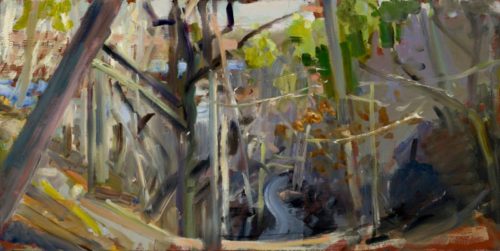
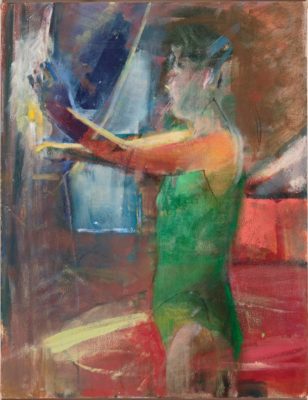

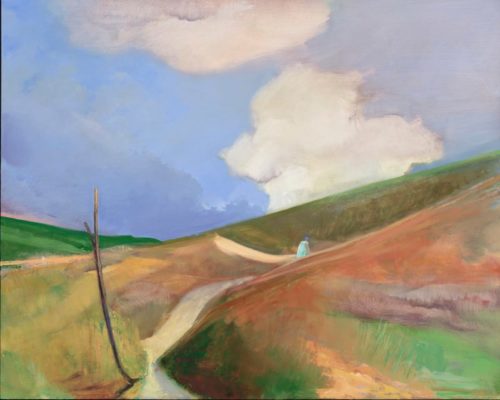
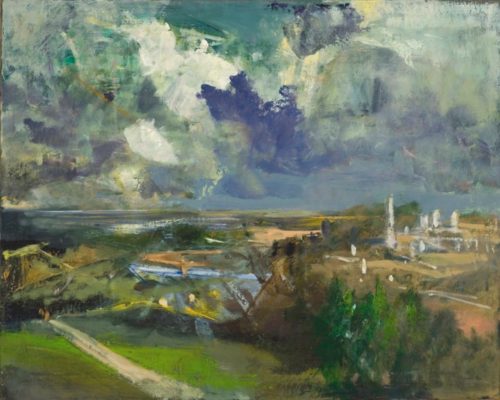
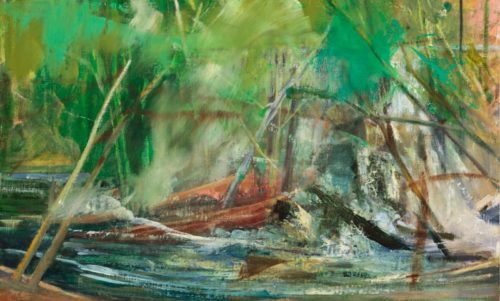
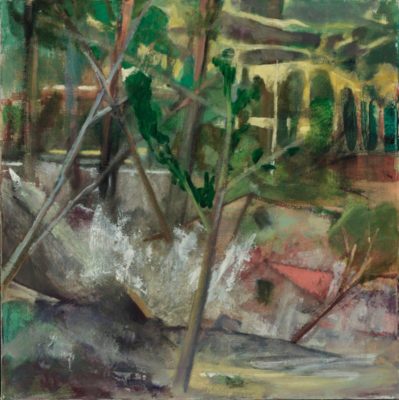
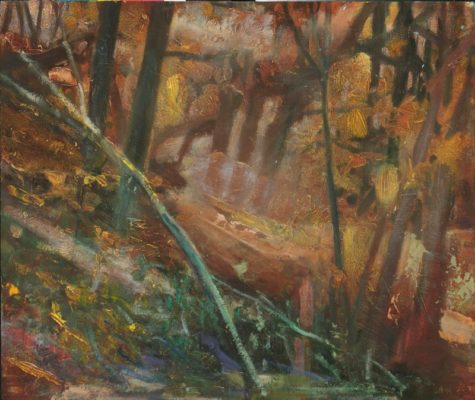

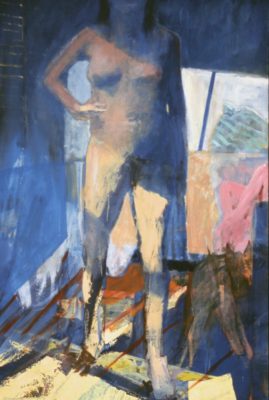
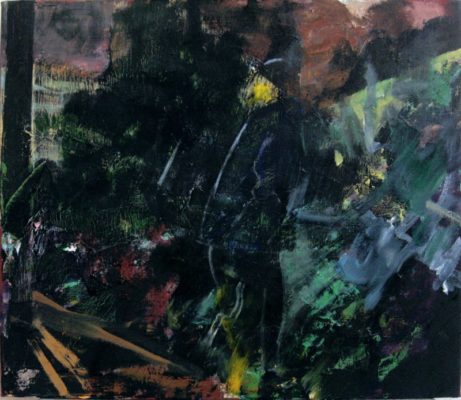
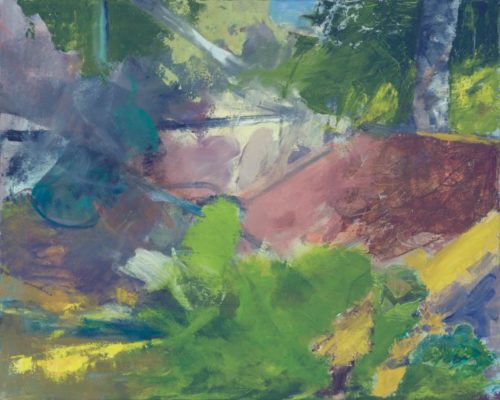
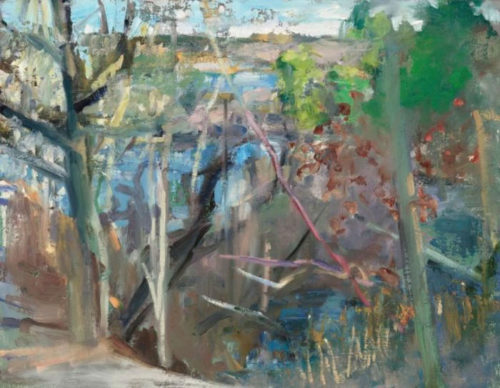
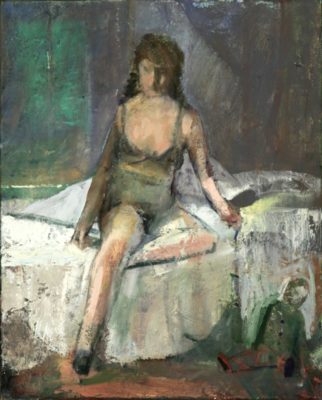

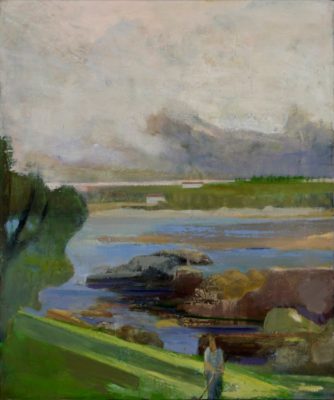


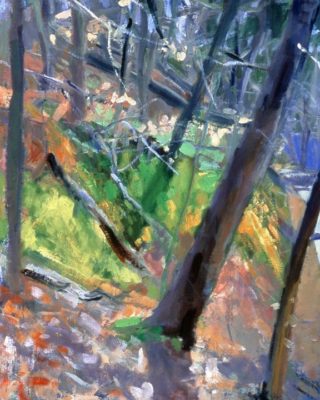
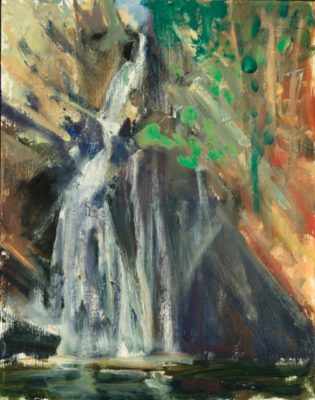
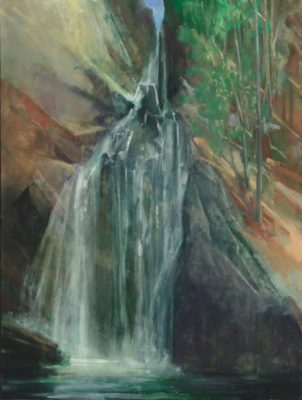
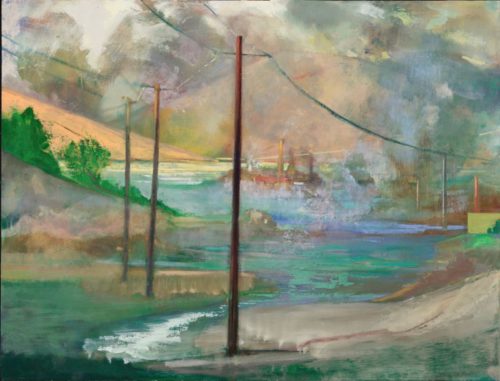
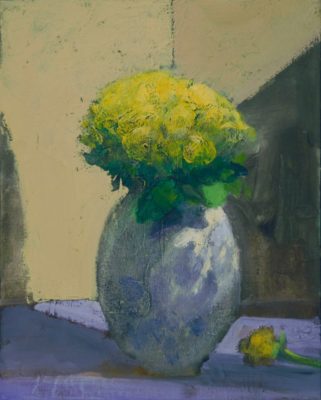
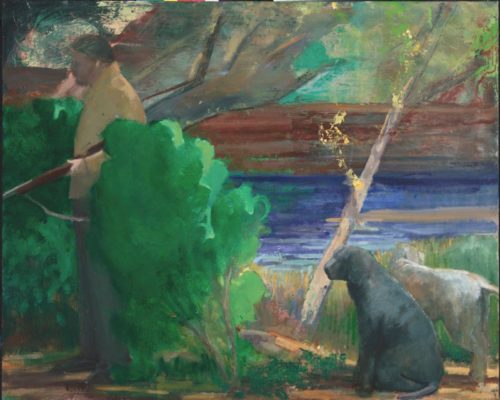
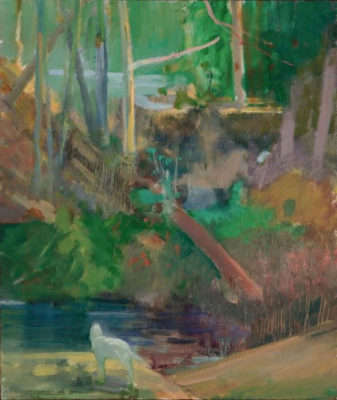
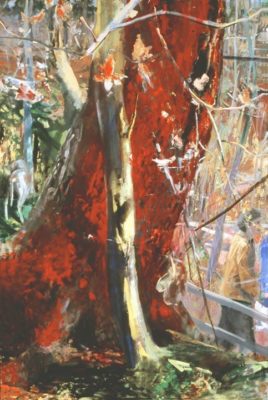
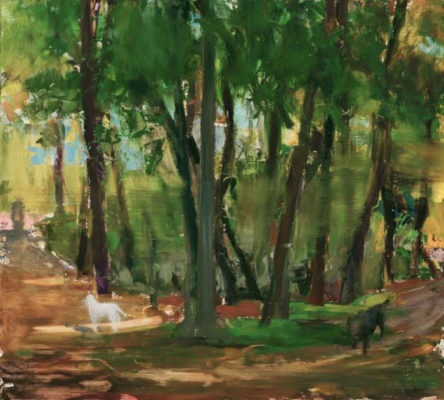
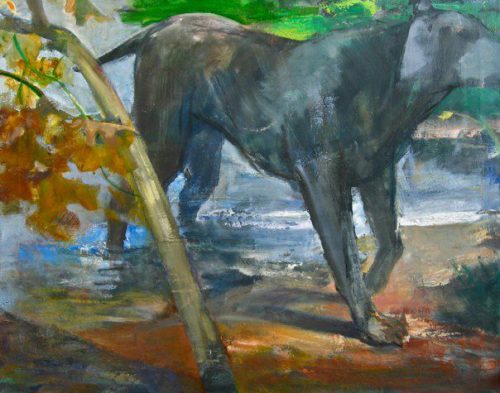
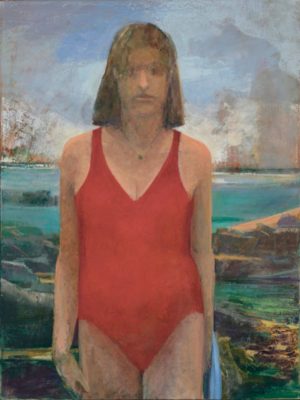
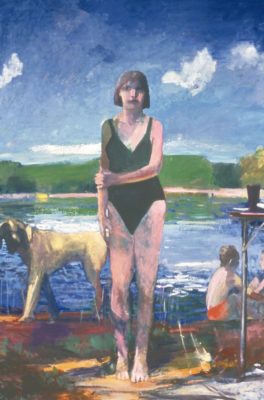
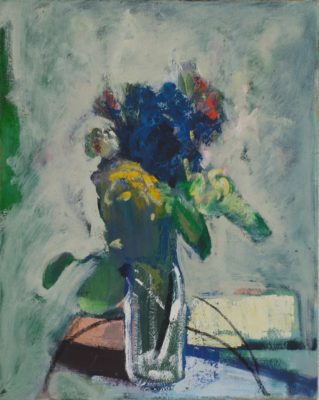
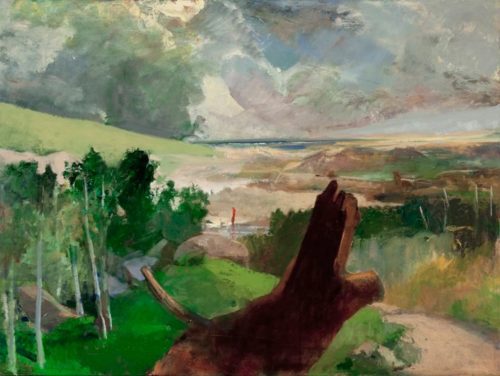

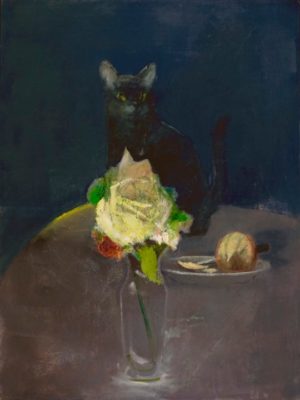




Wonderful amazing artist!!!!
Keep up the good work
Amen. Inspiringly candid dialogue. Great video too.